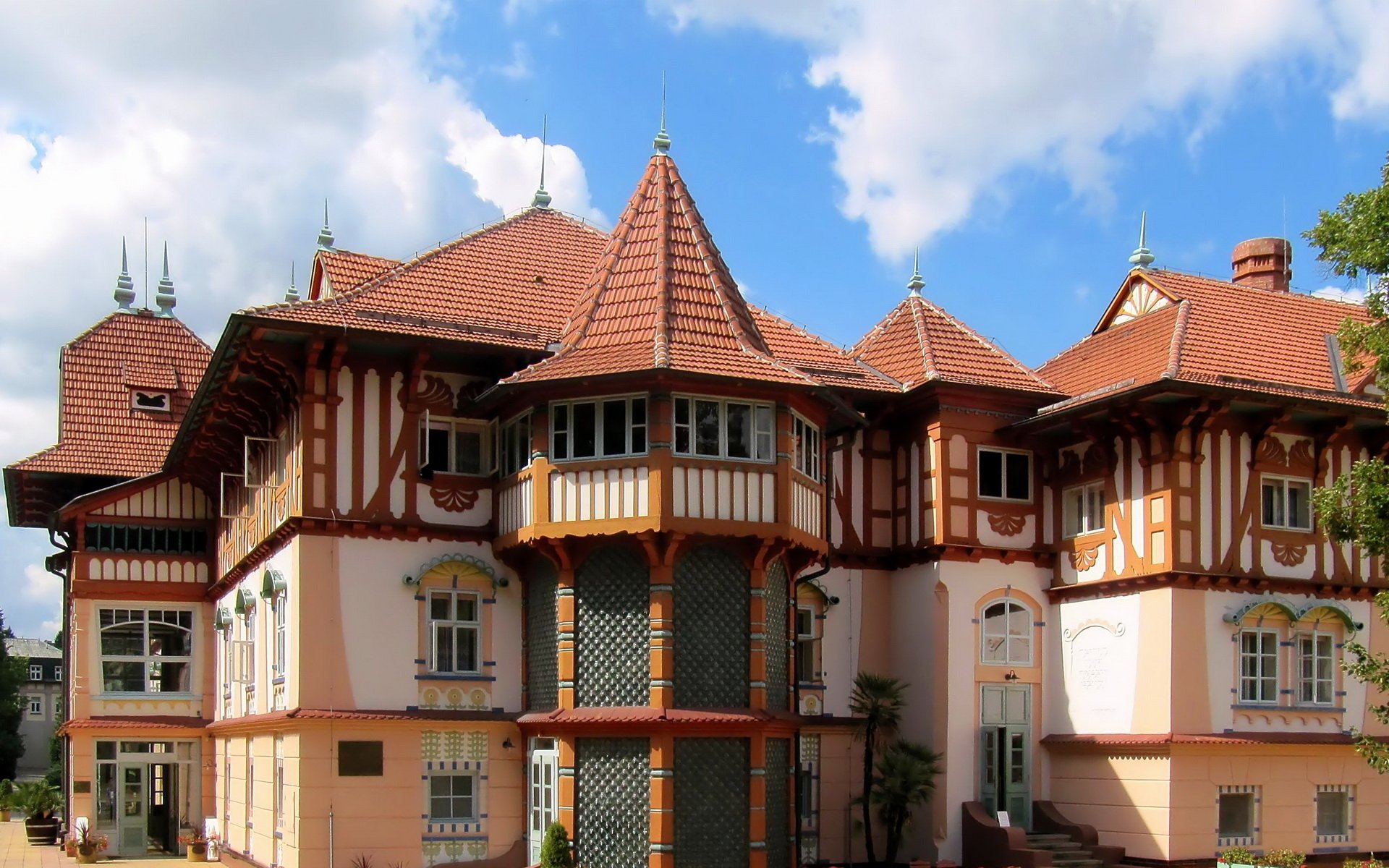#3797. Elegant Half-Timbered Art Nouveau Villa Facade with Distinctive Terracotta Roofs
The image showcases a magnificent example of European architecture from the late 19th to early 20th century, combining elements of Art Nouveau and Neo-Gothic with traditional half-timbered architectural traditions. The building features an asymmetrical composition and characteristic high roofs with pointed turrets topped with spires.
The facade demonstrates the typical half-timbered style with vertical and horizontal wooden elements against a light plastered background. Particularly expressive are the terracotta tiled roofs of complex configuration with steep slopes, creating a dynamic silhouette. The central part of the facade is accentuated by a hexagonal tower with a conical roof.
The windows of the building vary in shape and size: there are large panoramic bay windows as well as arched windows on the ground floor. The decorative finishes deserve special attention — carved elements under the cornices, ornate balcony railings, and ornamental inserts on the facade. The color palette builds on the contrast between the terracotta-orange tiles of the roofs and wooden elements with the creamy plastered wall surfaces.
The architect managed to create a building that, despite its impressive size, looks elegant and harmoniously fits into the surrounding landscape. It was likely a country villa or a small sanatorium in a resort town in Central or Eastern Europe.
